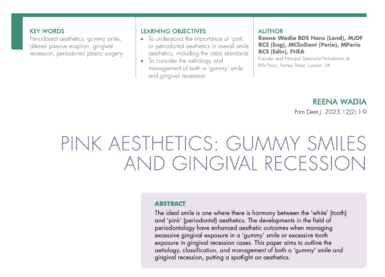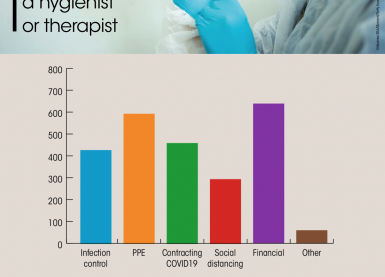February 27, 2014

Known causes of osteonecrosis of the jaw: Spontaneous, Bonjella, root canal medication, cocaine, lupus, sickle cell, herpes zoster, Wegner’s, radiation therapy/steroids, bisphosphonates, other anti-resorptive treatments.
Why the jaw? High bone turnover (x5 that of the tibia), micro-trauma due to teeth, ingress of infection via periodontal ligament, thin mucosal coverage, huge local bacterial load.
Sites affected: Mandible 67%, maxilla 26%, both 8%.
Prescribing patterns for bisphosphonates: Prescriptions have increased x100 in the last 10 years! 99% administered orally for osteoporosis.
Incidence of Bisphosphonate Related Osteonecrosis of the Jaw (BONJ): Oral bisphosphonates 0.04% – 0.1%, IV bisphosphonates 2-10%.
Pathophysiology: Local osteopetrosis, suppression of angiogenesis, accumulation of micro-fractures, disruption of bone remodelling, ulceration reduced defence, biofilm formation
Bisphosphonate toxicity: High intracellular concentrations cause apoptosis, osteoclasts absorb toxic levels of bisphosphonates, 50% of IV dose taken up by skeleton, alveolar bone high turnover, soft tissue cells will also internalise bisphosphonates, osteoclasts release bisphosphonates from bone at high concentrations.
Precipitating factors: Tooth extraction, periodontitis/gross caries, lingual tori, poorly fitting dentures, dental implants
Staging: Stage 0 – No exposed bone but pain or altered sensation, radiographic signs or other symptoms, Stage 1 – Exposed bone with no infection, Stage 2 –Exposed bone with infection, Stage 3 – Fracture, fistula formation
Treatment of bisphosphonate: Stopping bisphosphonates not useful, maintain oral comfort, chlorhexidine mouthwash, antibiotics (may need IV).
Extractions in patients on IV bisphosphonates: Avoid if possible, atraumatic, minimal bone removal, avoid lifting the periostium if possible, tension free primary closure, quadrantise, pre and post-op antibiotics and mouthwash.
Bisphosphonates and implants: It is well known that there is a significant risk of developing BONJ around implants placed in patients on IV bisphosphonates. Implant placement is contraindicated in cancer patients taking IV bisphosphonates (AAOMS position paper update 2009). There is evidence that BONJ can develop at implant sites in patients taking oral bisphosphonates. All patients should be informed of the risk.
Other antiresorptive drugs: Monoclonal antibodies, tyrosine kinase inhibitors, Radium 223, Strontium Ranelate, Raloxifine, Teripartide.
Key points:
- Oral bisphosphonates are low risk. IV bisphosphonates are the highest risk
- Maximise oral health
- Pre-treatment dental assessment vital
- Avoid invasive procedures
- Evidence on implant treatment is equivocal but risk appears low with oral bisphosphonates



